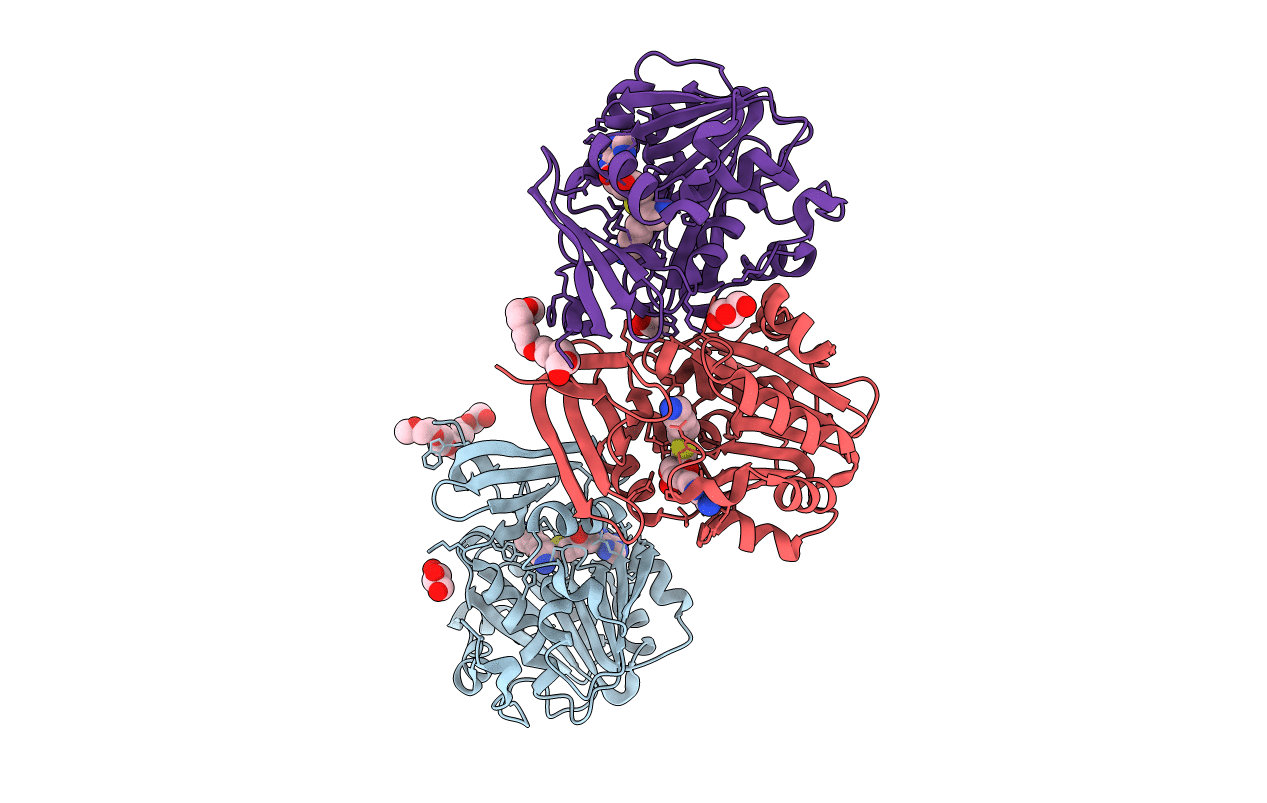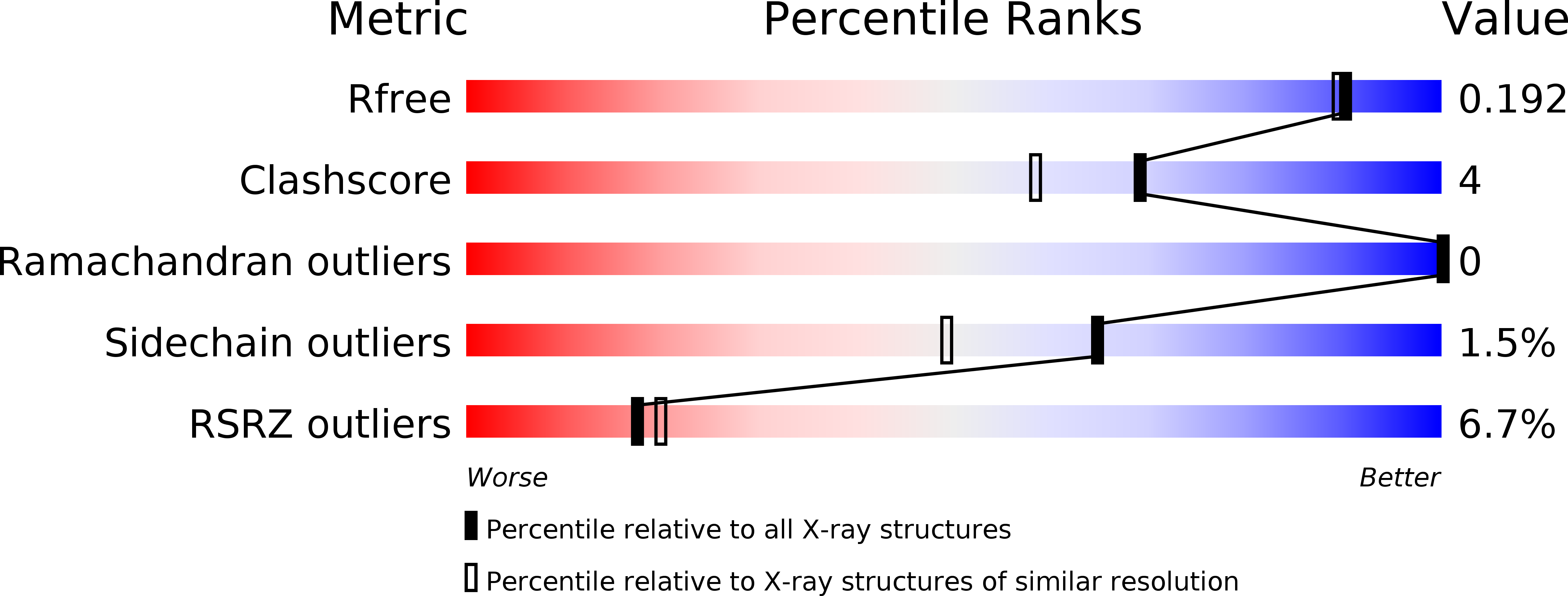
Deposition Date
2006-08-30
Release Date
2006-09-12
Last Version Date
2023-08-30
Entry Detail
PDB ID:
2I7C
Keywords:
Title:
The crystal structure of spermidine synthase from p. falciparum in complex with AdoDATO
Biological Source:
Source Organism:
Plasmodium falciparum (Taxon ID: 36329)
Host Organism:
Method Details:
Experimental Method:
Resolution:
1.71 Å
R-Value Free:
0.19
R-Value Work:
0.17
R-Value Observed:
0.17
Space Group:
C 1 2 1


